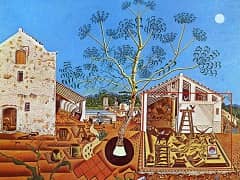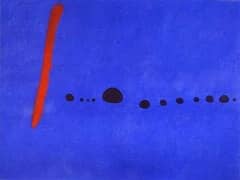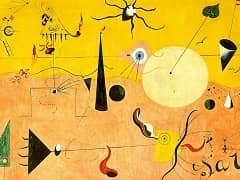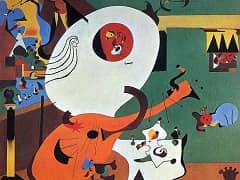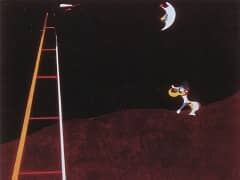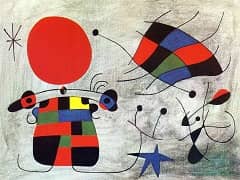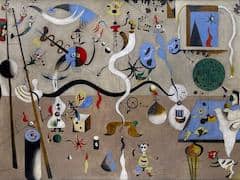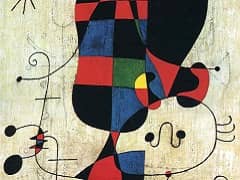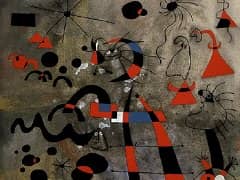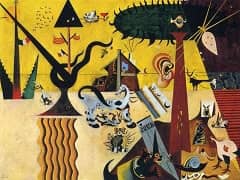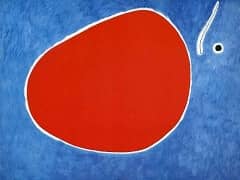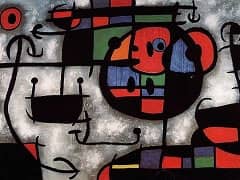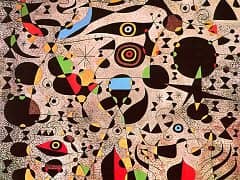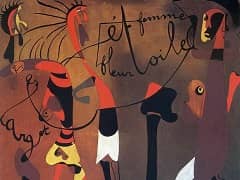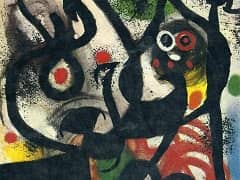The Table, 1920 by Joan Miro
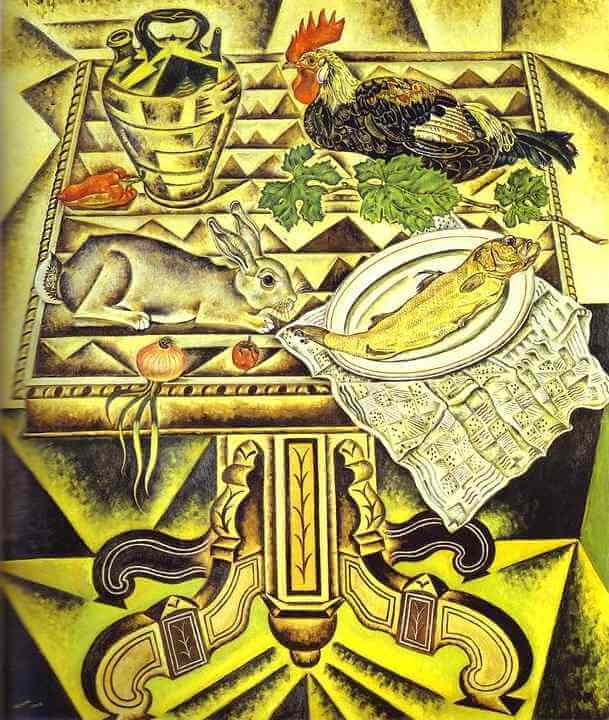
This is one of the last pictures in which Miro makes use of Cubism, on the one hand, and a painstaking, naturalist style with close attention to detail, on the other. Miro has incorporated two modes of expression - the Cubist mode, derived from Picasso and Braque, and his native, naturalist manner as an expression of his joy in telling a story. However, the two do not merge. Unlike the pictures of Synthetic Cubism of that time, where direct references to real life were incorporated into Cubist structures - as, for example, in Gris' paintings or Braque's collages - Miro opened up an unbridgeable gap between those two different worlds.
On a table, which is realistically drawn to perspective but has a Cubist inlay, there are a number of objects, some very much alive and others dead. On the far right there is a dried fish on an immaculately painted plate, with an oddly pattered tablecloth underneath that incorporates within its pattern the discrepancy between the two styles. On the left, there is a rabbit that looks as if it is about to jump forward, further back there is a highly stylized Spanish wine jar, and in the top right-hand corner, to crown it all, a rooster, magnificently decked with feathers and watchfully alert. The magic quality of this still life is enhanced by a few equally realistic vegetables and a sprig of vine leaves. The entire painting is surrounded by Cubist facets which are meant to suggest space.

